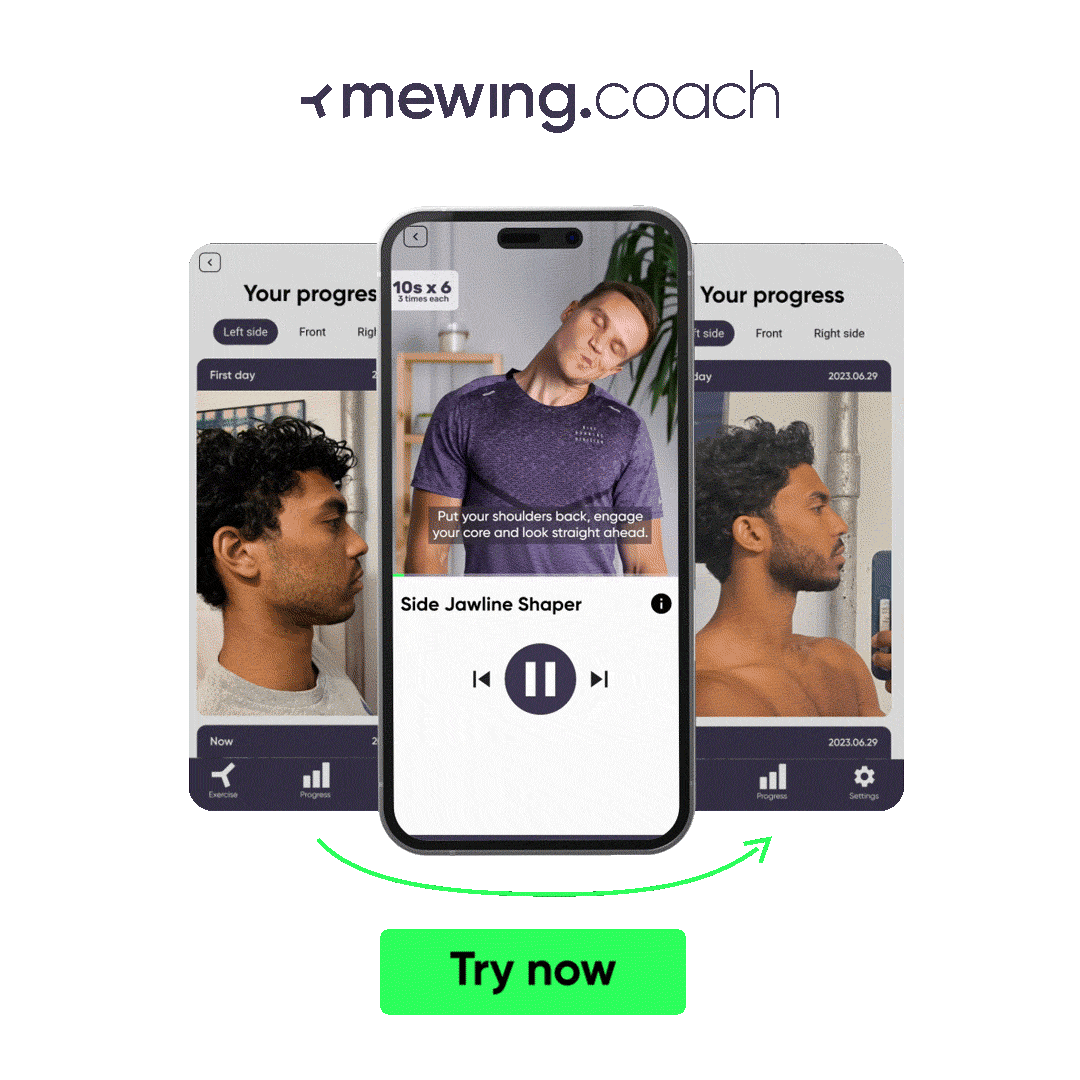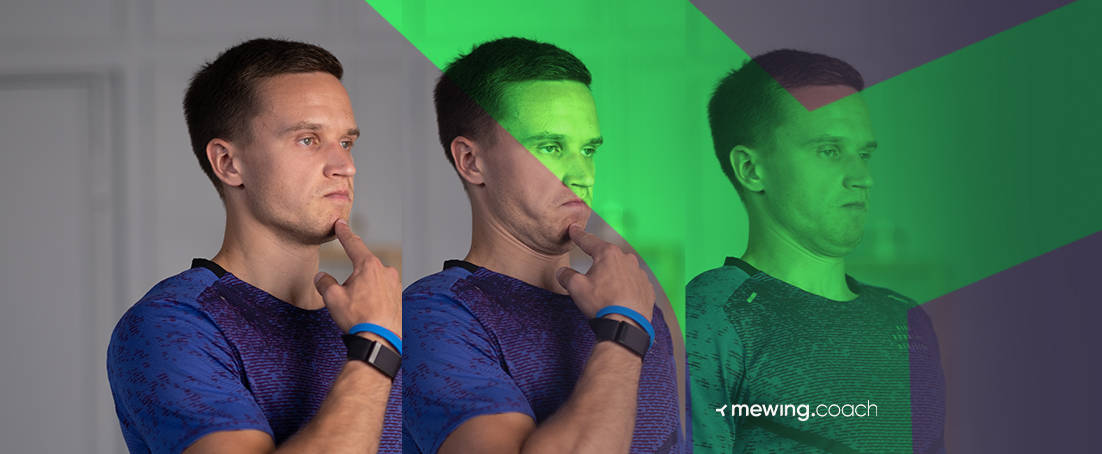
Have you ever heard about chin tucking? It’s a simple exercise that involves moving your chin forward and backward, which can eliminate muscle tension and also, help in getting rid of a double chin.
Chin tucks can help:
- 👍Improve poor posture, especially forward head posture
- ✔Get rid of neck discomfort and neck pain
- 🥰 Re-shape facial muscles and expressions
Aside from this, a weak jawline can often be a turnoff, and a simple chin tuck exercise can help improve the overall shape.
Take a quiz below and get a personalized face workout plan (including chin tucking)!
Read on to learn how to perform chin tucks properly, keep your chin straight and shine with confidence.
What is Chin Tucking?
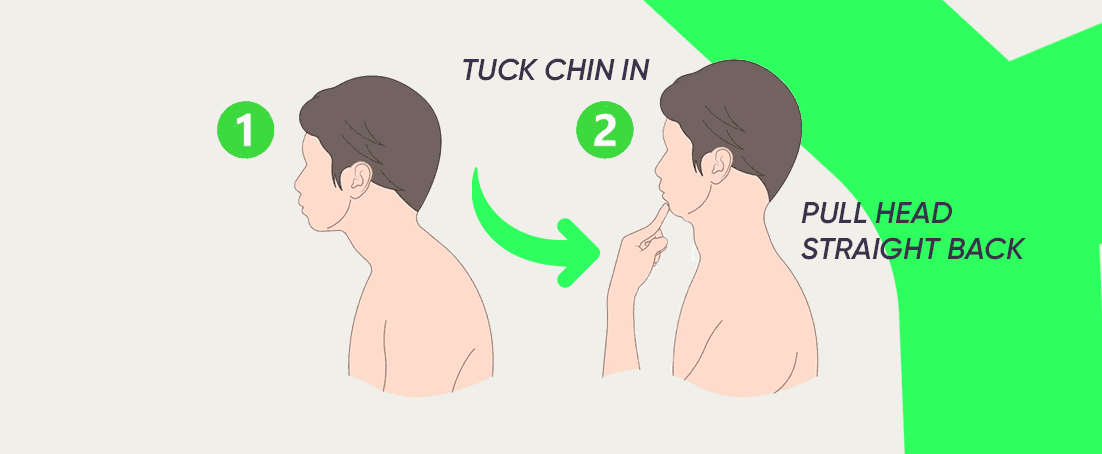
Chin tucking is a method of improving bad posture, by involving the deep neck flexor muscles, crucial for interconnecting the cervical spine, shoulder blades, and head.
This overall complex system of connection is substantially dependent on the activity of the neck muscles, which is why the connection between bad body posture and a double chin is often pointed out.
A weak jawline can be a turn-off and chin tucking activates the deep neck flexor muscles, which puts the tension here, relaxing other muscles, thus eliminating multiple origins of pain caused by bad posture.
Chin Tucking History
Chin tucking originates from the McKenzie chin tuck technique – developed by New Zealand physical therapist, Robin McKenzie. It was invented as a foundational treatment for eliminating back and neck pain and improving bad posture, regardless of the different chin types and shapes.
This stand-up technique involves standing straight against a wall and doing a chin tuck. To see results, you may even use a mirror, and place a piece of paper between the center of your head and the wall. If you do it right, the piece of paper will move up and down as you exercise.
Chin Tucking Advantages
By learning how to chin tuck properly and implementing chin tuck exercises in your overall exercise routine, you will activate and strengthen numerous cervical muscles, deep cervical flexors, and neck muscles. Below, we list the main chin-tucking benefits you can expect.
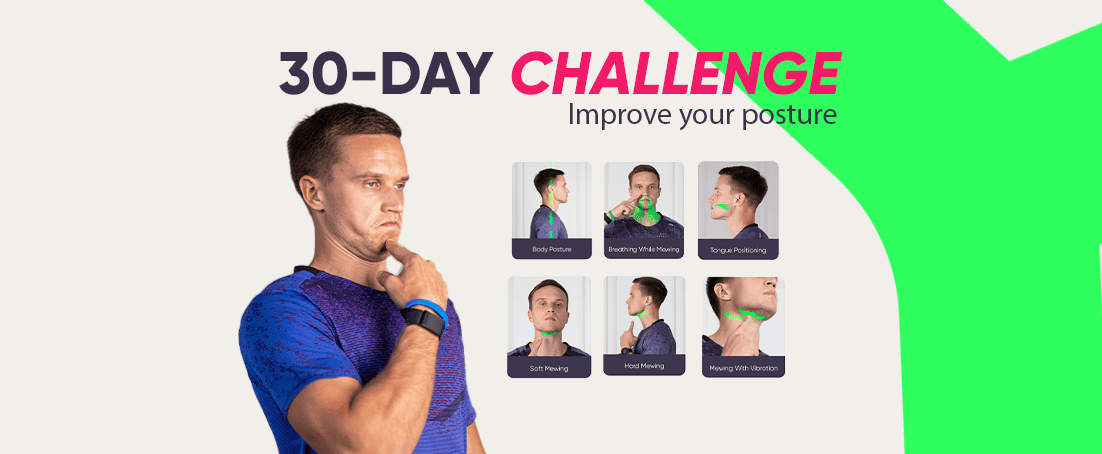
Correcting Forward Head Posture (FHP)
The head forward posture is one of the most common modern-day discrepancies of good posture. By staring at our computers, phones, and tablets, we’re constantly risking tilting our heads in an unnatural position and causing further pain.
Chin tucks are crucial to eliminating this risk. They activate the suboccipital muscles on the back of the head, which help neutralize the spine posture as well.
Reduces the Risk of FHP
If this small movement becomes your regular practice, you’ll never have to worry about visiting a physical therapist ever again.
Chin tucks activate not only chin muscles, but also the shoulders, neck, and spine – the basic foundation of our proper body stand and positioning. This way, they pay attention to a wider set of muscles and target multiple FHP issues at once.
Helps in Alleviating Muscle Tension such as Neck Pain
Imagine just how much strain wrongful forward head posture causes to the body. It leads to severe neck pain and even chest pain. If you often feel like suffocating and suffer from heartburn, it might all be due to an incorrect head posture which causes chest muscles stiffness.
By implementing chin tucking as a regular exercise routine, you will not only eliminate muscle tension but allow your entire body to relax and find ease.
Trains Back, Neck, and Face Muscles
Various variations of the chin tuck exercise, like the supine chin tuck, or the quadruped chin tuck, can activate different neck muscles. This can significantly improve muscle posture in the area above the neck, including bettering numerous facial muscles and aiding overall facial symmetry.
Regular chin tuck exercises can, however, help equally strengthen facial muscles, just as mewing can help you reshape your chin.
Correcting Improper Posture
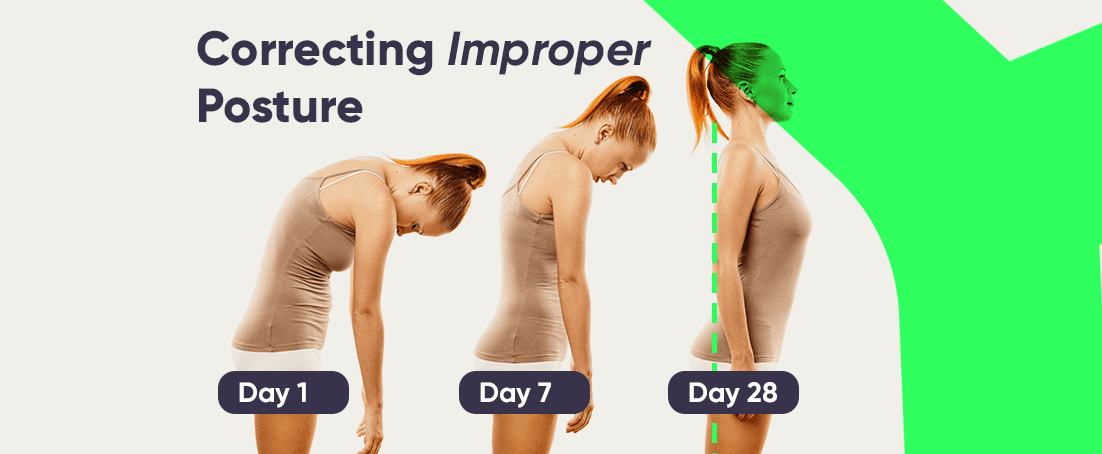
The human body is deeply interconnected by collaborative sets of muscles and joints.
The head is the most active body part and puts muscles all the way to the base of the spine into motion. Considering you can exercise chin tucks while standing or sitting, these will help you constantly improve unfavorable and subconscious head movements leading to bad posture.
Guide on How to Do Chin Tucking Exercises the Right Way
Chin tucks can be done in both sitting and standing positions, and don’t require standing against a wall, as with the original McKenzie tuck.
Here’s a short and simple guide on how to do chin tucks properly – ideally with a mirror on hand for easier maneuvering.
- First step. Stand (or sit) as upright as possible. Look up front, while aiming to place your head as straight as possible, locating your ears exactly above your shoulders.
- Second step. Place your finger on the chin, without applying any pressure.
- Third step. Start pulling your chin and head to the back. During this step, you should feel a gentle stretch on the root of your head, where it connects with the neck. To do it right, be sure that your finger is not touching the chin.
- Fourth step. Aim to hold this position for at least 5-10 seconds before releasing.
- Fifth step. This step requires you to slowly come back to the starting position, where your chin and finger touch, using controlled movements.
- Final step. Repeat the overall cycle, back and forth, with controlled movements, for as much as you can without causing any strain.Remember: we’re not trying to overburden the neck and jaw muscles, but start implementing the exercise slowly in our daily routine.
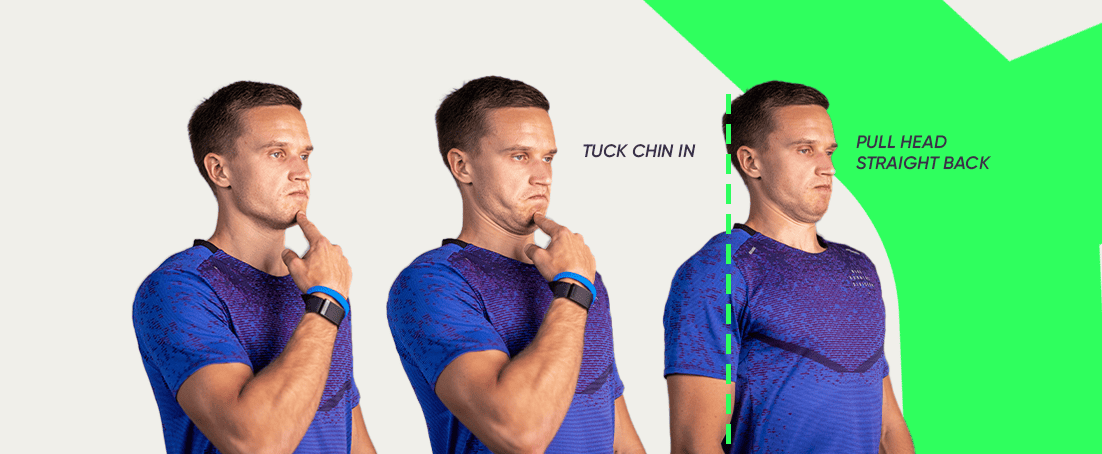
Most Common Chin Tucking Mistakes
Good as chin tucks may be, if you do them wrong, they will come with possible side effects. For example, overdoing chin tuck exercises can visibly reshape some body parts, making them asymmetrical and bigger than the regular ratio.
Also, improper exercising can result in muscle stretches, which can cause other unwanted effects, in the long run, additionally causing bad posture. Other side effects you can expect from doing chin tucks incorrectly are:
- Irregular swallowing. If you do not keep your tongue in the right position or fail to follow through with other instructions, swallowing problems are likely to occur.
- Prevents airflow. The chin tuck technique has been commonly used with patients suffering from dysphagia, as it brings the back of the tongue closer to the throat, thus enabling proper throat air circulation. if done wrong, the airway will become obstructed.
- Increase jaw length. Considering that jaw muscles can in fact grow, and we can consciously re-shape our jawline and size, improperly exercising the jaw muscles can result in improper jaw lengthening, facial dislocation as well as asymmetry.
Mewing as an Alternative for Chin Tucks
Mewing is a technique that, aside from chin tucks, focuses on a set of other exercises that optimize the facial structure. It focuses on movements that involve and require proper tongue posture. At the same time, mewing also activates the chin and neck muscles. We also have a fully covered Mewing description if you want to learn more.
To get the right hand on mewing and sort out any chin, neck, or facial muscle issues, trust Mewing.coach. This free app gives insights into all proper mewing techniques, including chin tucks, with the goal of reshaping the jawline, improving posture, and achieving better facial structure. By integrating personalized segments, Mewing Coach allows for a seamless and successful mewing experience, adapted to every individual’s needs and abilities.
Get your personal mewing and chin tuck exercise coach when you download the Mewing.coach app today!
